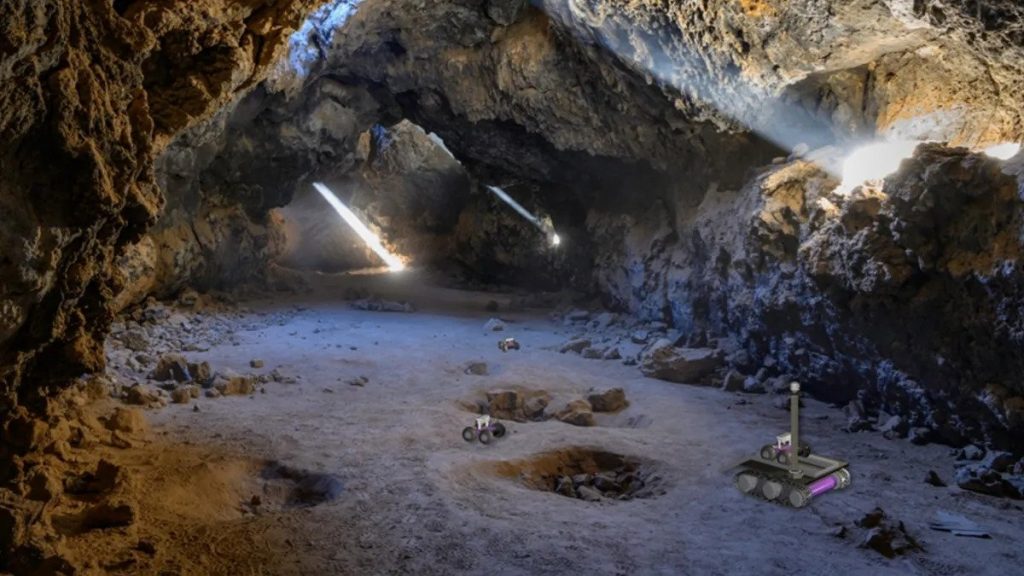Researchers at the University of Arizona College of Engineering are using a flock of robots to explore subsurface environments in other worlds in search of potential real estate.
According to a press release, Wolfgang Fink, an associate professor of electrical and computer engineering at UArizona, and his team have published a paper in Advances in Space Research outlining a “communication network that would link rovers, lake landers, and even submersible vehicles through a so-called mesh topology network, allowing the machines to work together as a team, independently from human input.”
This development suggests that life on Mars may be closer than expected.
“Lava tubes and caves would make perfect habitats for astronauts because you don’t have to build a structure; you are shielded from harmful cosmic radiation, so all you need to do is make it pretty and cozy,” said Fink.
Based on the fairy tale ‘Hansel and Gretel’, the scientists have given their patent-pending concept a name: the “Breadcrumb-Style Dynamically Deployed Communication Network” paradigm, or DDCN.
According to Fink, this paradigm could help NASA overcome one of its Space Technology Grand Challenges by providing a solution to the limited ability of current technology to traverse environments safely on comets, asteroids, moons, and planetary bodies.
The rovers are connected via a wireless data connection and continuously monitor their environment. When a rover detects that the signal is weakening but still within range, it deploys a communication node. It drops the node regardless of the distance it has traveled since the last node was placed.
“If you remember the book, you know how Hansel and Gretel dropped breadcrumbs to make sure they’d find their way back. In our scenario, the ‘breadcrumbs’ are miniaturized sensors that piggyback on the rovers, which deploy the sensors as they traverse a cave or other subsurface environment,” explained Fink.
According to Fink, the rovers do not require any help from their mother rover. Each subordinate rover is capable of operating independently. The DDCN concept enables a team of rovers to explore intricate underground environments while staying in constant communication with their mother rover on the surface.
The data gathered by these robotic explorers is transmitted back to the mother rover on the surface. This means that it is unnecessary to retrieve the robots once their mission is accomplished.
“Instead of wasting resources to get them into the cave and back out, it makes more sense to have them go as far as they possibly can and leave them behind once they have fulfilled their mission, run out of power, or succumbed to a hostile environment,” said Fink.
“The communication network approach introduced in this new paper has the potential to herald a new age of planetary and astrobiological discoveries,” said Dirk Schulze-Makuch, president of the German Astrobiological Society and author of many publications on extraterrestrial life. “It finally allows us to explore Martian lava tube caves and the subsurface oceans of the icy moons – places where extraterrestrial life might be present.”

